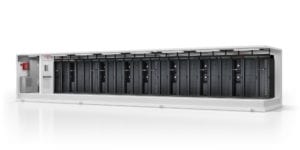Last fall, we upgraded our office to have more ergonomic desks. As a direct consequence, I’m now having a new bigger screen, as well as an ergonomic mouse, in addition to some habit changes concerning my sitting position on my chair… Through that can be felt as a small change for a huge company as Schneider Electric, it actually had quite an impact for me. Regular pains in the shoulder disappeared, leading to a less grumpy behavior quite appreciated by my surrounding co-workers, as well as more efficient engagement while I’m working on my tasks rather than focusing on the physical discomfort.
Having experience first hands the impact of ergonomics, I’m convinced that similar improvements can be provided to the ergonomics of control interfaces, leading to more efficient and comfortable interaction of operators with their machines. The present article is the second in a series where I’m developing a couple of practical tips for this purpose. It will focus on functional grouping, which is the organization of your control interface so that controls and indicators related to each key function of the machine are grouped together. For example, if you are working on a feeding machine for animals, the control interface can be split into 2 groups, 1 related to the water input and the other one related to the cereals input so that your animals can both drink and eat. Such grouping of control and indicators into meaningful groups is a very strong way of making your control interface intuitive and easy to use for operators.
There are basically 5 solutions to implement such functional groups. The 2 first solutions are using standard components and their relative positions on the panel.
Solution 1 : Proximity
In this solution, the 2 groups are identified by the distance between the components. Components of the same group are located close to each other and you have a big gap with an empty separating the groups.
Proximity solution: the 2 groups are separated by a large empty spaceSolution 2 : Continuity
Our brain is naturally wired to identify lines. This fact is often used in various magical spectacles and for optical illusion tricks, but it also means that locating your components on a curve is making it easy for our brain to identify them as a group even if the curve is not explicitly drawn.
Continuity solution: each group is “drawing” a moon crescent shape , which leads our brains to identify them as 2 separate families.Solution 3 : Similarity
This solution is leveraging customized components. The components within one function group are sharing an aesthetic feature, and each group has each own signature. For example, it is sometimes possible to change the color of the bezel of the pushbuttons, which means that each functional group can have a dedicated bezel color.
Similarity solution: The water group is identified by the blue color of the pushbutton bezels, whereas the food group is using yellow bezels.The 2 last solutions are using drawings external to the pushbuttons. Therefore, you need to be able to customize the markings of your complete control interface to use them, for example by using customized legend panels also known as layout stickers. It is also possible to reach similar results by using laser engraving directly on the chassis of your machine.
Solution 4 : Connectiveness
In this solution, the components of a similar group are linked together by external lines.
Connectiveness solution: All components in the functional groups are linked by a line to the central logo representing the group function, either water or food.Solution 5 : Common region
The last solution is based on external lines creating the borders of each function groups.
Common region solution: Each group has a clear marked borderline. Discover more tips in our “Building efficient operator workstations” brochure
Discover more tips in our “Building efficient operator workstations” brochure
Or begin using our Product Selector & Customization tool to design your control interface.
If you are curious about it, the first article in the series can be found here.
If you want to share your own trick and tips, don’t hesitate to use the comments.




Conversation
It was indeed a pleasure to read the different solutions and has indeed very large practical application.
Thank you for taking the time to read my blog, I’m glad you found it helpful. A third entry on this topics is planned a bit later during the summer, so don’t hesitate to come back to read it too.